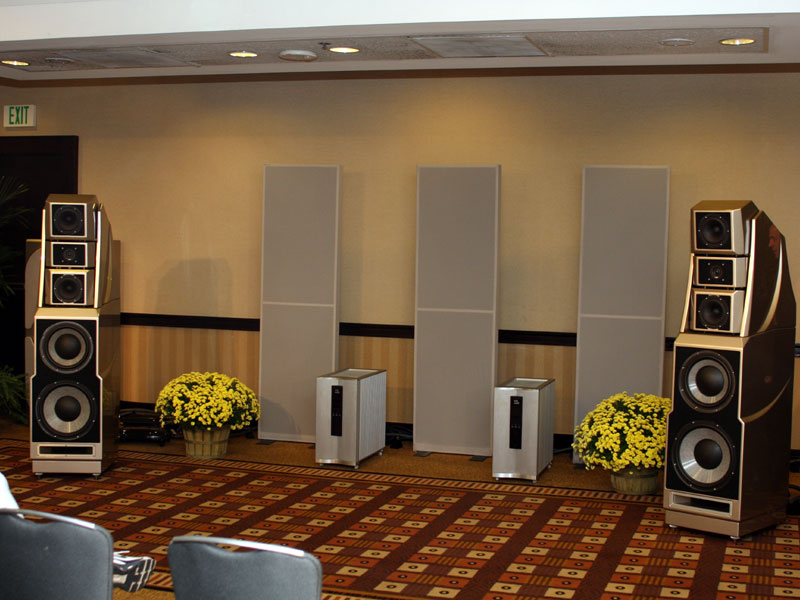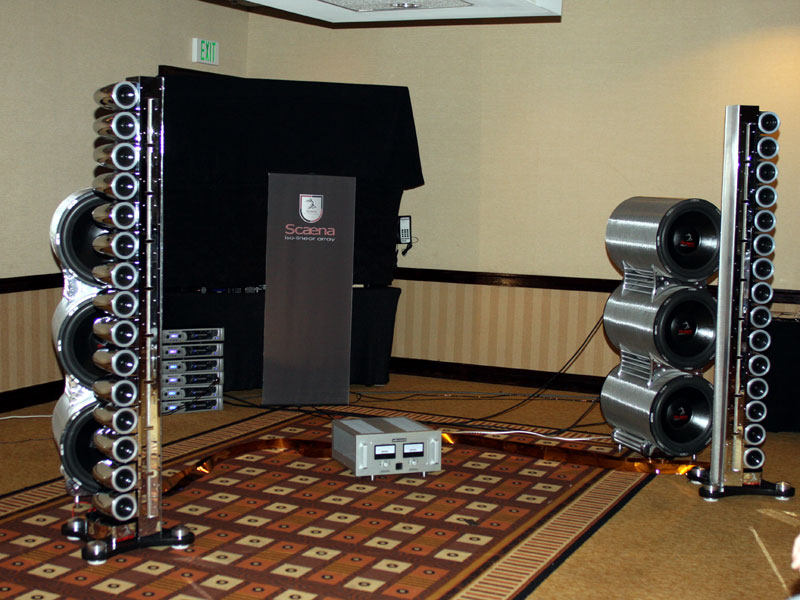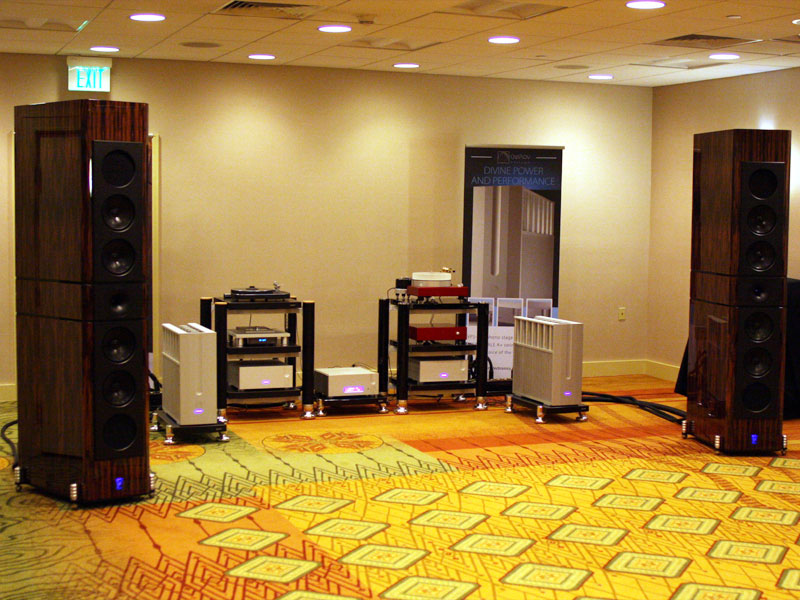Rocky Mountain Audio Fest 2013 • TABlog
Here in the US at least, ambition is exalted as the driving force of accomplishment, wealth, even fame. But when it comes to audio shows, ambition is a double-edged sword. It can just as easily lead to abject failure as it can to elated success, the capability of hotel rooms and conference rooms to support no-compromise sonics being a formidable variable. None of this mattered to a handful of companies that assembled three systems at the RMAF whose ambition was on immediate display and tied intimately to the respective sonic outcomes of their systems. Wilson Audio reprised the system assembled for the 2012 California Audio Show -- almost. Instead of just one Wilson Thor's Hammer subwoofer ($25,000), there were two this time, used along with a pair of Alexandria XLF speakers ($195,000/pair). Electronics were the best from VTL, including Siegfried Series II monoblocks ($65,000/pair) and TL-7.5 Series III line stage ($20,000), with a Parasound stereo amp driving the subs. The source was the mighty dCS Vivaldi transport ($39,999) and DAC ($34,999) augmented with a MacIntosh playing native DSD files. Cables were all Transparent Audio Opus MM2. Knowing these products rather well -- I had the Wilson speakers, VTL electronics and Transparent cables in my listening room for a couple of months -- I could judge the results with firsthand knowledge. At RMAF, demos were held every hour on the hour, with the same five cuts played each time, and there was no denying the immensity of the dynamic range and the seemingly limitless bass depth and power. In fact, during the demo I attended, a woman in the front row (the wife of a mastering engineer, no less) practically jumped out of her seat when a kick drum entered from out of nowhere on the first cut played.
I've also previously heard Scaena Spiritus 3.6 line-source speakers along with the company's Trifecta subwoofers ($130,000/system), but only under "show conditions." The electronics were different at the RMAF, including an Audio Research Reference 75 stereo amp ($9000) to drive the line-source towers and six Crown professional amps to drive the subs -- one per driver/enclosure. Beyond that the details of the system were sketchy, though I know the preamp was from Veloce Audio, the digital source was the dCS Vivaldi "stack" -- transport ($39,999), DAC ($34,999), upsampler ($19,999) and clock ($13,499) -- with a server providing file playback, and the cables were from Silversmith Audio. A Kronos Audio turntable was also part of this system but not being used, at least during my two visits. This system was housed near the Wilson/VTL system at the Hyatt in an even larger room and set up diagonally. Again, dynamics and bass pushed at the boundaries of what is possible here and now; however, because I heard only unfamiliar music that displayed both big dynamic swings and potent bass, I couldn't tell much beyond that. Still, it seemed clear that the room was not hampering the sonic results much, if at all.
Finally, I had a Saturday-evening private listening session with the system that Aaudio Imports assembled in one of the large ground-floor rooms at the Marriott, and once again I was familiar with some of the equipment used, this time from a visit to Aaudio in Parker, Colorado, last year. A full system of Ypsilon electronics, including the PST-100 Mk II preamp ($37,000), SET-100 mono amps ($125.000/pair), DAC-100 digital-to-analog converter ($29,000) and CDT-100 CD transport ($26,000), were used with Lansche 8.2 speakers ($266,000/pair) that are so ginormous that you could literally, and quite comfortably, bury a gorilla in each cabinet. What you can't see from the photo above was the 8.2's pair of rear-mounted 18" powered subwoofers, which along with the speaker's plasma tweeter meant that both the top and bottom were pushed to the extreme. Cables were from Stage III -- approaching $100,000 in overall cost -- and the racks and amps stands were from Tandem. Also part of the system was a Hartvig TT Signature turntable ($28,400) with battery power supply ($5400), but without the owner around, I won't mess with another guy's analog rig, even with piles of records nearby to tempt me. This system was very adept at conveying low-level detail and microdynamic expression, the Ypsilon electronics being quieter than any of the CDs I played, which is saying something. But more bombastic cuts from my demo CD-Rs revealed some problems with the room, which was completely untreated. These included slap echo between the untreated side walls and what sounded like a room mode that thinned out the midbass. In Aaudio's professionally treated listening
room, the results would surely be different -- and more revealing of the system's true
capabilities. But assembled at the RMAF, this system was as much about the statement it
made visually and in terms of its collective price, which was over half a million dollars,
as it was about the sound it produced, and that's ambition of an altogether different
sort. |



